Definition, Formulas, Solved Example Problems - Discrete random variable | 12th Business Maths and Statistics : Chapter 6 : Random Variable and Mathematical Expectation
Chapter: 12th Business Maths and Statistics : Chapter 6 : Random Variable and Mathematical Expectation
Discrete random variable
Discrete
random variable
Definition 6.2
A variable which can
assume finite number of possible values or an infinite sequence of countable
real numbers is called a discrete
random variable.
Examples of discrete
random variable:
·
Marks obtained in a test.
·
Number of red marbles in a jar.
·
Number of telephone calls at a particular time.
·
Number of cars sold by a car dealer in one month, etc.,
For instance, three
responsible persons say, P1, P2, and P3
are asked about their opinion in favour of building a model school in a certain
district. Each person’s response is recorded as Yes (Y) or No (N). Determine
the random variable that could be of interest in this regard. The possibilities
of the response are as follows
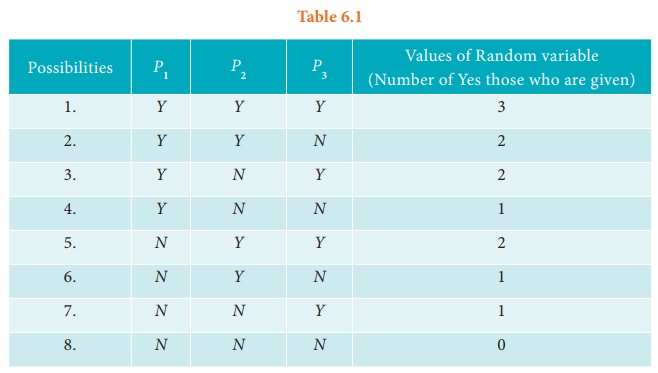
Form the above table,
the discrete random variable take values 0, 1, 2 and 3.
Probability Mass function
Definition 6.3
If X is a
discrete random variable with distinct values x1 , x2
, ..., xn , ... , then the function, denoted by PX
(x) and defined by

This is defined to be
the probability mass function or discrete probability function of X. The
probability mass function p(x) must satisfy the following
conditions
(i) p(xi )≥ 0 ∀i , (ii) 
Example 6.1
The number of cars in a
household is given below.

Estimate the probability
mass function. Verify p(xi ) is a probability mass
function.
Solution:
Let X be the number of cars
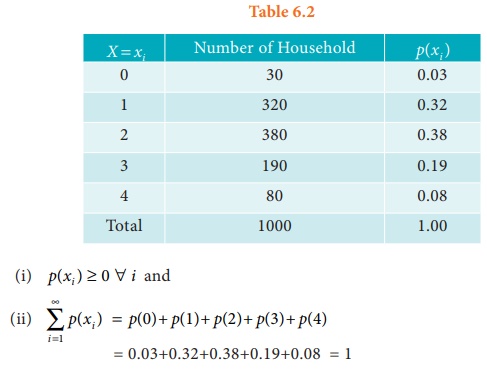
Hence p (xi)is a
probability mass function.
Note
For X = 0 , the probability
0.03, comes from 30/1000, the other probabilities are estimated similarly.
Example 6.2
A random variable X
has the following probability function

(i) Find a ,
Evaluate (ii) P (X < 3) , (iii) P (X > 2) , and (iv) P (2 < X ≤
5) .
Solution:
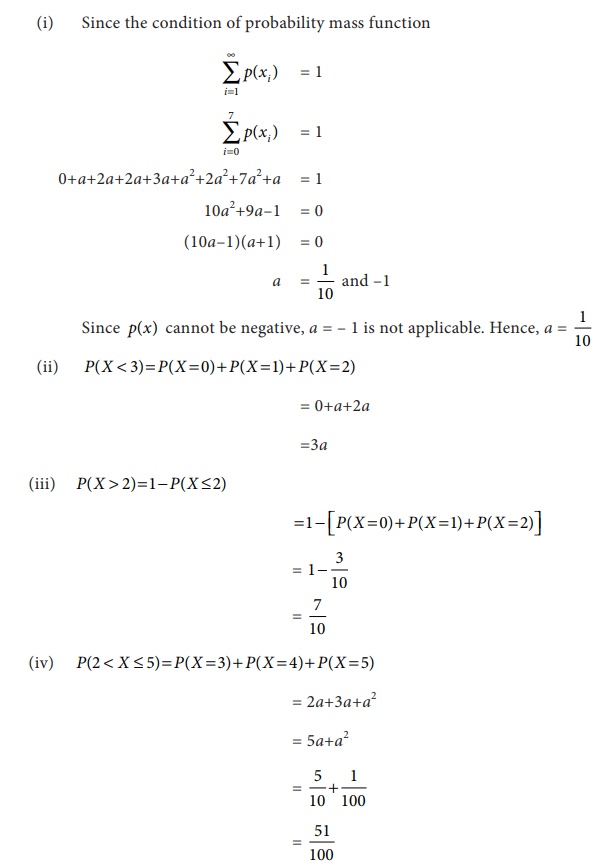
Example 6.3
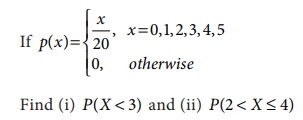
Solution:

Example 6.4
If you toss a fair coin
three times, the outcome of an experiment consider as random variable which
counts the number of heads on the upturned faces. Find out the probability mass
function and check the properties of the probability mass function.
Solution:
Let X is the random
variable which counts the number of heads on the upturned faces. The outcomes
are stated below

These values are summarized
in the following probability table.
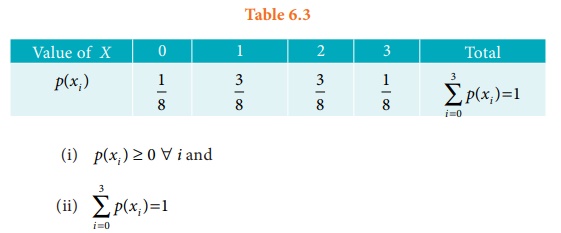
(i) p (xi) ≥ 0 ∀ i
Hence, p(xi)is a probability mass
function.
Example 6.5
Two unbiased dice are
thrown simultaneously and sum of the upturned faces considered as random variable.
Construct a probability mass function.
Solution:

Discrete distribution function
Definition 6.4
The discrete cumulative
distribution function or distribution function of a real valued discrete random
variable X takes the countable number of points x1 , x
2 , ... with corresponding probabilities p(x1
), p(x2 ), ... and then the cumulative distribution
function is defined by
FX (x) = P (X ≤ x ), for all x ∈R

For instance, suppose we
have a family of two children. The sample space
S = {bb, bg, gb, gg},
where b =boy and g = girl
Let X be the
random variable which counts the number of boys. Then, the values (X)
corresponding to the sample space are 2, 1, 1, and 0.
Hence, the probability
mass function of X is

Then, we can form a
cumulative distribution function of X is
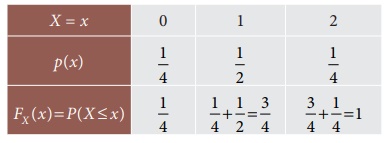
Example 6.6
A coin is tossed thrice.
Let X be the number of observed heads. Find the cumulative distribution
function of X .
Solution:
The sample space (S) ={
(HHH), (HHT), (HTH), (HTT),(THH),(THT),(TTH),(TTT)}
X takes the values: 3,
2, 2, 1, 2, 1, 1, and 0
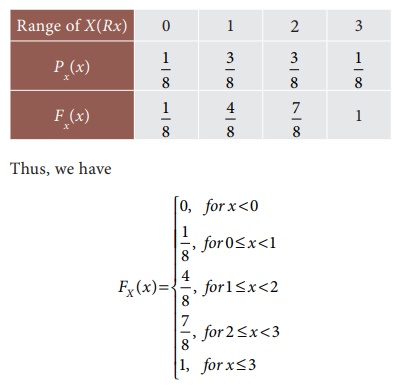
Example 6.7
Construct the
distribution function for the discrete random variable X whose
probability distribution is given below. Also draw a graph of p(x) and F(x).

Solution:
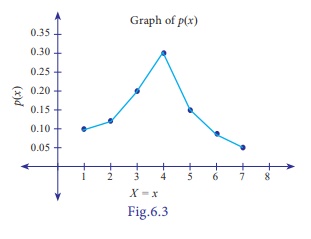
From the values of p (x) given in the probability distribution, we obtain
F(1) = P(x≤1) = P(1) = 0.10
F(2) = P(x≤2) = P(1) + P(2) = 0.10 + 0.12 + 0.22
F(3) = P(x≤3) = P(1) + P(2) + P(3)
= + F(2) + P(3)
= 0.22 + 0.20
= 0.42
F(4) = F(3) + P(4)
= 0.42 + 0.30
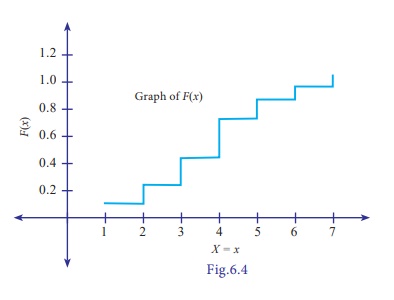
= 0.72
F(5) = F(4) + P(5)
= 0.72 + 0.15
= 0.87
F(6) = F(5) + P(6)
= 0.87 + 0.08
= 0.95
F(7) = F(6) + P(7)
= 0.95 + 0.05
= 1.00
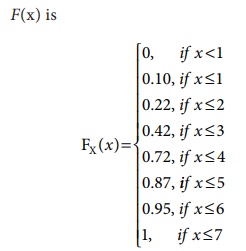
Related Topics